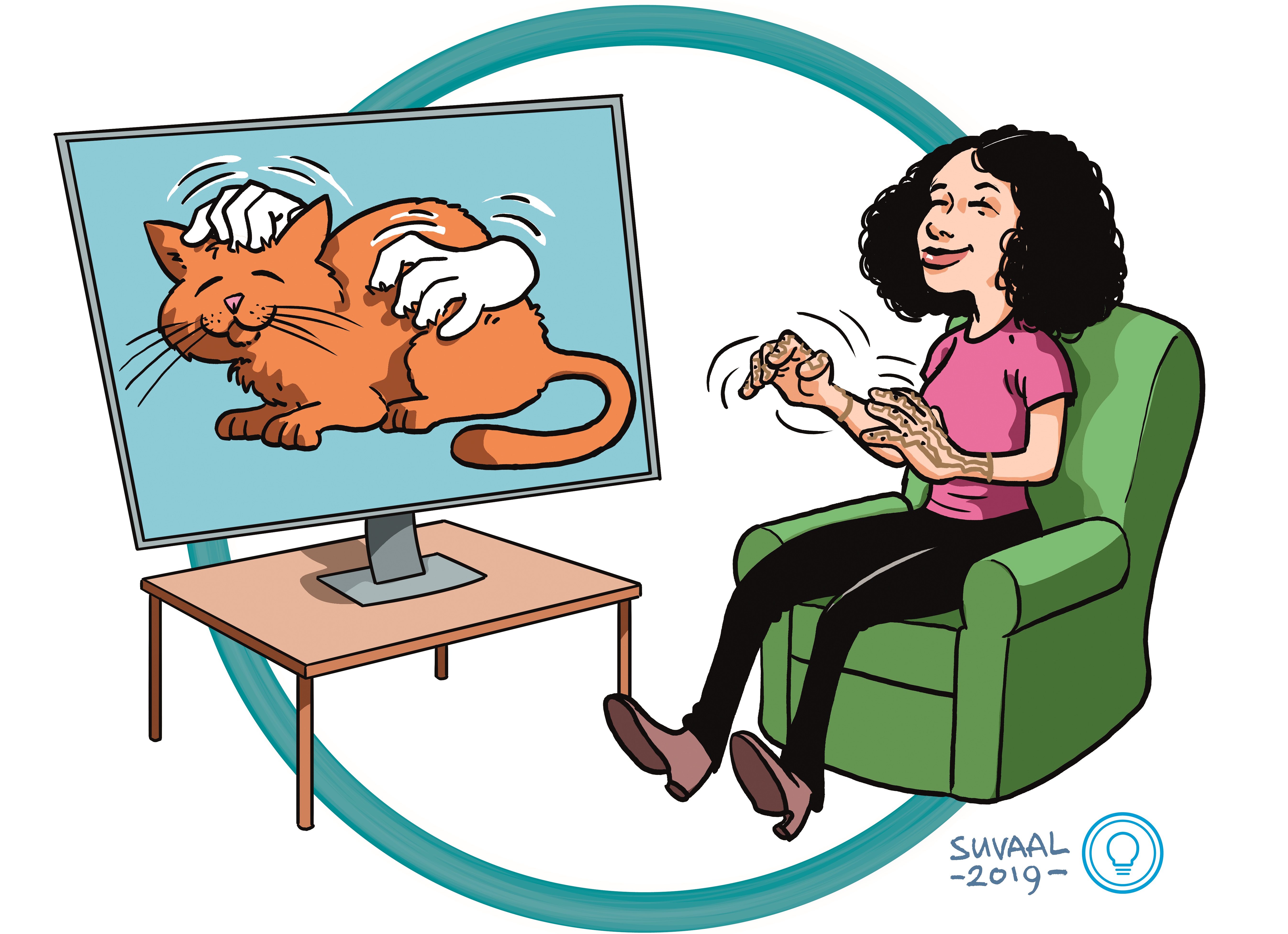A sense of touch – creating hapic feedback in VR
Themes: Life Science & Health, Robotics


A TRL is a measure to indicate the matureness of a developing technology. When an innovative idea is discovered it is often not directly suitable for application. Usually such novel idea is subjected to further experimentation, testing and prototyping before it can be implemented. The image below shows how to read TRL’s to categorise the innovative ideas.
Summary of the project
Your skin is the largest external organ of your body. Your sense of touch is derived from contact events which activate receptors in the skin, muscles and joints. This gives rise to both cutaneous and kinaesthetic properties of our sense of touch. What you feel is comprised by the ability to detect various contact event properties/parameters such as temperature, structure, strength, movement, among others.
The researcher aims to further the fundamental understanding of the sense of touch so this knowledge can be applied to the design of new objects, sporty products or even VR experiences. For instance the curve – convex or concave - of an object can determine how this object feels with respect to material properties, when you touch it. Currently the researcher works on how a realistic haptic feedback can be designed in VR experiences.
You experience VR mainly with your eyes – wearing VR goggles - and body movement –position of your hands or whole body. In order to make the VR experience more realistic designers are working on solutions that also give you a sense of touch, so when you pick up an object in a VR environment, you get a similar feeling as if you would pick up this object in real life. The fact that the researcher starting point is fundamental research is what makes her approach unique. Through a multi-disciplinary approach the researcher aims to come with sensory solutions that resemble natural interactions, so that the experience is intuitive and is immediately recognisable across VR users.
What's next?
The next step is to measure and identify the features in our everyday interactions that allow us to know that we are touching velvet, for example, no matter how we manipulate the material. To do this, a wearable array of accelerometers and other sensors will allow us to identify invariant features in mechanical interactions that most probably depend on the movement phase involved in an interaction. With the data from the accelerometers and other sensors, the researcher will identify the stable features that allow us to reconstruct the n-dimensional cue space that constitutes our world of touch, creating VR H-reality.
Dr. Jess Hartcher – O’Brien
